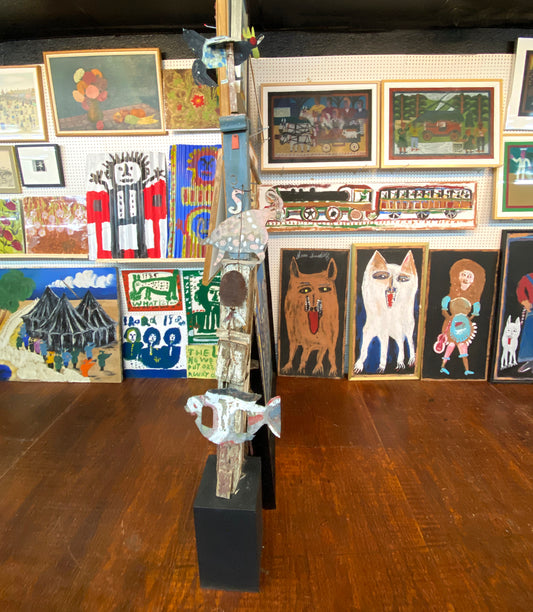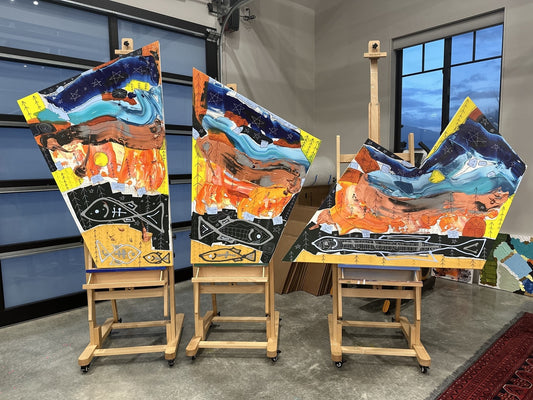Erkki Pirtola
(1950–2016)
Erkki Pirtola, a visual and performance artist, critic and a champion of ITE art, died suddenly on a street near his home in Helsinki on 23 January 2016. He was 65.
Pirtola‘s view of art was expansive. He knew the history of art but had his own, very original interpretation of it. He was greatly influenced by artists whose work dealt with the problem of being human, from van Gogh to Joseph Beuys. Pirtola’s take on art was profound and unique.

Pirtola (r) with artist Johannes Ivakko; photo © Veli Grano
In his opinion, creativity that flourishes among children, outsider artists and those in the margins of art was an instrument for seeing the ‘world-in-between’. According to him, this was an area that could reunite the spiritual and physical worlds.
Pirtola’s own anarchic career as an artist started in the 1970s, and he held his first solo exhibition in Helsinki in 1976. He received a wider cult reputation as a cartoonist for alternative magazines. He’d acquired an irreverent underground attitude from his good friend, the Lappish artist Kalervo Palsa, and in 1979 he found a new way to channel his energies as he began to apply this attitude in a larger scale with the Ö Group, which produced provocative performances. The Ö events introduced performance art to Finns, but Pirtola’s biggest impact on the Finnish arts scene came when he wrote his eccentric art reviews for one of the country’s biggest newspapers between 1980 and 1992.
Pirtola found his topics in alternative galleries and from outside the established art world. The main objects of his inventive criticism were the spiritual death of modernism, the then-predominant trend in art and art institutions’ willingness to maintain the status quo as well as the world view, which was characterised by a deep prejudice that profit was everything, which had entered not only the art world but all of society.
When Liisa Heikkilä-Palo of the Union for Rural Culture asked Pirtola to help survey Finnish contemporary folk art (later known as ITE art) in 1999, it was as if this was the thing he’d been looking for all his life. Pirtola said that ITE art ‘saved’ him. It was in ITE art that he found the ideals of his youth: boundless creativity that is characterised by a lightness that can make you laugh yet it also tackles our most profound truths and emotions. His close rapport with and affection for ITE artists was mutual.
Pirtola wrote enthusiastic articles about ITE and outsider art for numerous publications, such as ITE year books and Raw Vision, and he also curated exhibitions and recorded dozens of videos of artists. Audiences could enjoy his hysterically funny videos at ITE exhibitions in Finland and overseas. One of the memorable moments is the lecture on Finnish ITE art that Pirtola gave with Hannu Saha at the publication of Raw Vision’s Outsider Art Sourcebook at Tate Modern in 2002.
Pirtola’s four sons will keep their father’s work alive. They have donated thousands of videos featuring Finnish outsider art to the Finnish National Gallery archives.
by Veli Granö


